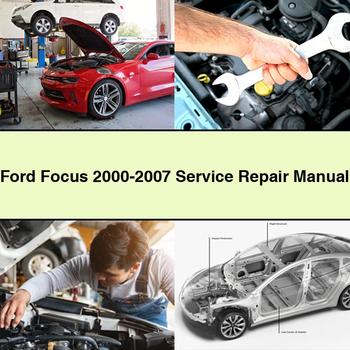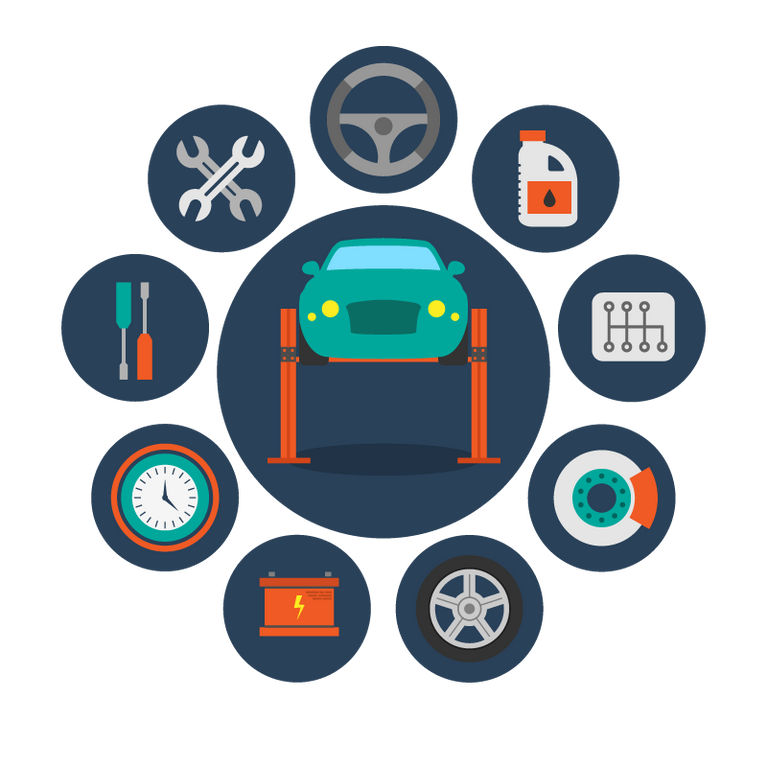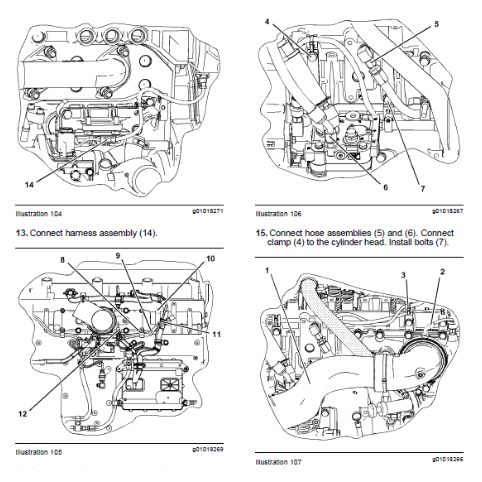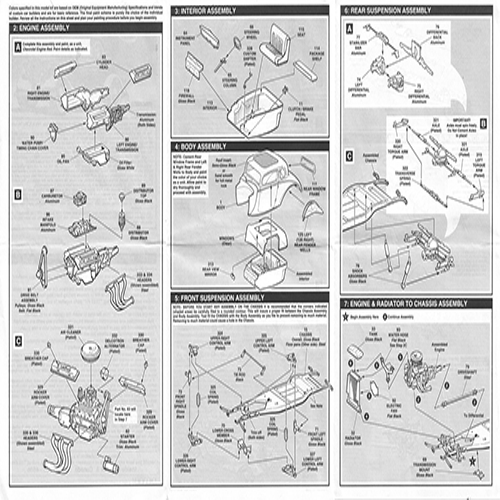Target Audience:
Do-it-yourself (DIY) car owners and experienced automotive technicians.
Value Proposition:
Inexpensive way to keep the vehicle working properly, providing dealer-level repair information without the high cost of dealership service.
Detail Level:
Extreme detail based on complete disassembly of the vehicle, ensuring thorough coverage of all repair procedures.
Accessibility:
Instant high-speed download, eliminating shipping costs and waiting times.
Powertrain:
Engine, Fuel System, Emission Control, Intake/Exhaust, Cooling, Lubrication, Ignition, Starting, Charging, Automatic Transmission, Clutch, Manual Transmission, Transfer Case, Driveshaft, Differential, Axles
Chassis:
Suspension, Steering, Brakes (including Parking Brake), Wheels, Tires
Electrical:
Wiring Diagrams, Electrical System Diagnosis, Lighting, Instruments, Audio/Visual, Horn, Wiper/Washer, Door Locks, Engine Immobilizer, Cruise Control, Air Conditioning, Supplemental Restraint System (SRS), Seat Belts
Body:
Bodywork, Exterior/Interior Trim, Glass/Mirrors, Instrument Panel, Seats, Engine Hood/Doors
Maintenance:
Scheduled maintenance, fluid checks and changes, filter replacements, tune-ups
Diagnostics:
Troubleshooting guides, fault code identification, electrical system diagnostics
Repair:
Step-by-step repair procedures for all major mechanical and electrical components, including complete disassembly and reassembly instructions
Depth Of Information:
Comprehensive, from basic maintenance to advanced diagnostics and repair procedures, suitable for both DIY enthusiasts and professional mechanics.
Readability:
High-quality PDF, compatible with all PC-based Windows, Mac, and Linux operating systems.
Printability:
Fully printable, allowing users to print specific sections or the entire manual.
Binding:
Digital Download (not a physical book)
Paper Quality:
N/A (Digital Format)
Illustrations:
Hundreds of high-quality illustrations, drawings, and photos, including enlarged inset views for detailed part examination.
Instruction Format:
Numbered step-by-step instructions, detailed substeps, notes, cautions, and warnings.
Navigation:
Numbered table of contents for easy information retrieval.
Engine Options Covered:
Various gasoline engine options typically found in the 2000-2007 Ford Focus, including 2.0L SPI, 2.0L DOHC Zetec, and 2.3L DOHC Duratec. Specific engine codes would be detailed within the manual.
Horsepower Torque:
Detailed specifications for horsepower and torque output for each engine variant will be found within the manual.
Fuel System Type:
Fuel Injection (likely multi-point or sequential)
Spark Plugs:
Specific spark plug types and gap specifications will be provided. Example: For Zetec engines, often Motorcraft Platinum or equivalent.
Engine Oil:
Recommended engine oil viscosity grades (e.g., 5W-30) and API service classifications will be detailed. Example: Ford specified WSS-M2C153-H for many of these models.
Coolant:
Specific coolant type (e.g., Ford Gold Coolant or equivalent) and mixture ratio (e.g., 50/50 ethylene glycol/water) will be specified.
Standard Transmission Type:
Manual Transmission (e.g., MTX-75 or IB5) with 5-speed configurations
Optional Transmission Type:
Automatic Transmission (e.g., 4F27E 4-speed automatic)
Transmission Fluid:
Specific transmission fluid specifications (e.g., Mercon V for automatic transmissions) and fill capacities will be included.
Body Styles Covered:
Sedan (4-door), Hatchback (3-door and 5-door), Wagon
Curb Weight:
Varies by body style and powertrain. Manual will provide specific curb weights for different configurations.
Towing Capacity:
Generally not rated for towing; specific details will be in the manual if applicable to certain configurations.
NHTSA Ratings:
The manual will likely contain references to available safety features and potentially crash test data summaries, though specific ratings are external to the manual itself.
Braking System:
Front disc brakes, Rear drum or disc brakes depending on trim and year. ABS (Anti-lock Braking System) availability.
Steering:
Power rack and pinion steering; some models may have electric power assist.
Airbags:
Front airbags for driver and passenger. Side airbags and curtain airbags may be optional or standard on higher trims.
Seat Belts:
Three-point seat belts with pretensioners for front occupants; rear seat belts.
Child Seats:
ISOFIX/LATCH child seat anchor points.
Audio System:
Various audio system options, including AM/FM stereo, CD player, and optional premium sound systems. Manual will cover repair and diagnostics for these systems.
Cruise Control:
Availability of cruise control, with diagnostic and repair information in the manual.
Multiplex Communication:
Covers CAN (Controller Area Network) communication systems, crucial for modern vehicle diagnostics and inter-module communication. This is explicitly mentioned as covered in the manual.
Oil Change Interval:
Typically every 5,000 to 7,500 miles or 6 months, whichever comes first, depending on driving conditions and oil used. Manual will specify exact intervals.
Air Filter Replacement:
Recommended every 15,000 to 30,000 miles or as needed based on driving environment. Manual will detail specific interval.
Spark Plug Replacement:
Varies by plug type. Platinum or Iridium plugs often have intervals of 100,000 miles. Manual will confirm for specific engines.
Timing Belt Replacement:
For Zetec engines (belt-driven), typically around 100,000 miles or 10 years. Duratec engines are chain-driven. Manual will specify for each engine type.
Brake Fluid:
DOT 3 or DOT 4 brake fluid (check manual for specific recommendation).
Power Steering Fluid:
Specific power steering fluid type; often Mercon or Dexron compatible fluids, but manual verification is critical.
Common Problems:
Common issues may include automatic transmission solenoid issues (especially on early models), ABS sensor failures, rear axle beam bushings wear, and some electrical component failures (e.g., window regulators, climate control modules). The manual will offer diagnostic and repair procedures for these and many other potential issues.
Ford Global Positioning:
Ford Focus is a globally recognized compact car, known for its European design roots and widespread appeal.
Generation Covered:
This manual covers the first generation Ford Focus (Mk1) introduced in North America for the 2000 model year, which was based on Ford's global C1 platform (though some early NA models used the older P.I.S. platform). It covers the significant facelift introduced for the 2005 model year.
Manufacturing Locations:
For North America, primarily produced at the Wayne, Michigan assembly plant.



